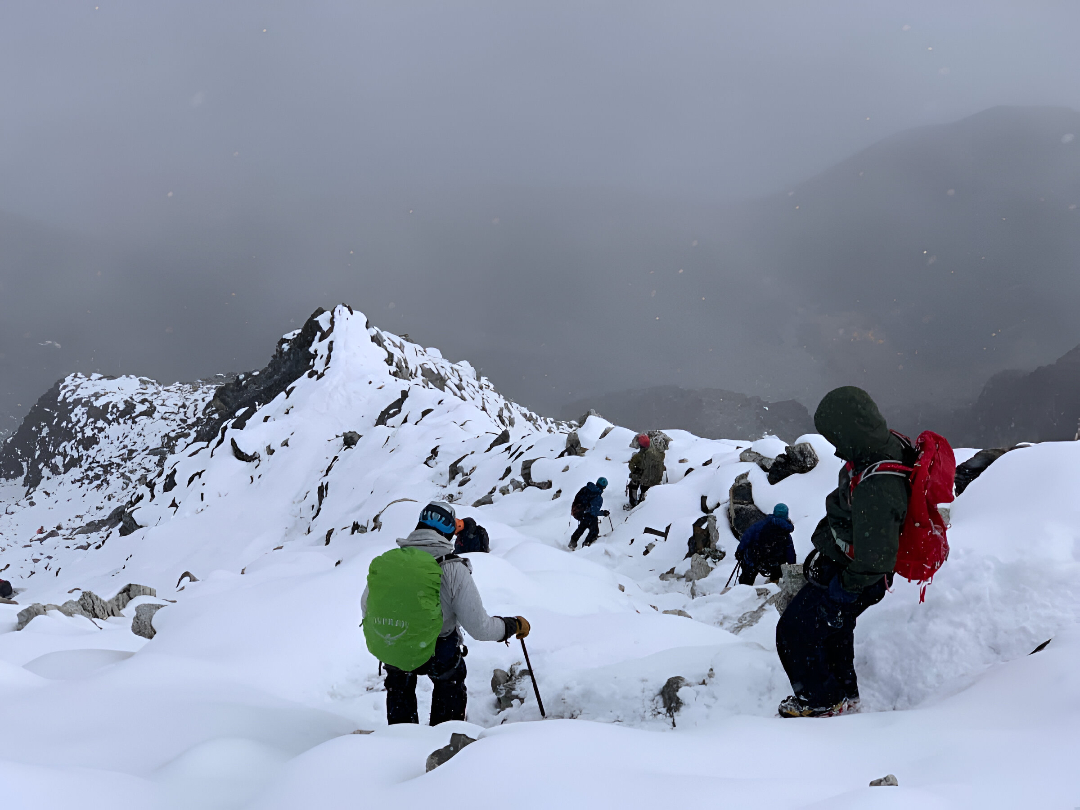Overcoming the ups and downs of altitude requires downhill hikers to plan specifically. The difference between conquering your mountain goals and struggling at every step can be determined by a combination of a targeted downhill hiking workout and an effective hiking training plan. Knowing the difference between hiking incline training and the demands of downhill conditioning will improve your trail performance, regardless of whether you’re training for a high-altitude climb or a local hill repeat.
It’s important to keep in mind that uphill and downhill movements engage different muscle groups when building your speed hiking training program. Building strength and endurance for climbing is the primary goal of preparing for hiking elevation gain, but proper leg training for mountain climbing should also address the eccentric control required for safe descents.
1.The Science Behind Uphill vs. Downhill Hiking Fitness
The primary goals of an ideal hiking plan are to increase muscular strength and cardiovascular endurance. Your glutes, quads, calves, and core are all used in a concentric (short) contraction pattern while training for the uphill hike. Downhill hiking workouts require the muscles to work eccentrically (lengthen under tension) to control your descent.
You need to focus on both movement patterns to properly train for speed hiking. While your leg training for mountain climbing should include exercises that mimic the braking motion of the descent, your preparation for hiking should include increasing tension on inclines.
2. Components of a Hiking Training Plan
-
Incline-Specific Cardio
Constant workouts on steep terrain are the foundation of every effective hiking training plan. Continuous hiking incline training builds endurance for long climbs, whether on a treadmill set at 15%+, on stadium stairs, or on nearby hills.
-
Uphill Strength Training
Incorporate weighted steps, treadmill walks with a pack, and calf lifts into your hiking elevation gain prep. The leg training for mountain climbing needed to propel yourself uphill is developed through these exercises.
-
Practice Breathing and Pacing
If you can’t sustain the climbs, no downhill hiking workout will help. Use rhythmic breathing techniques during your uphill hiking training plan sessions. This essential component of hiking incline training separates mountain-ready athletes from recreational hikers.
3. Essentials of Downhill Hiking Workouts
-
Develop Eccentric Strength
A proper downhill hiking workout emphasizes lengthening muscles under pressure. Include Romanian deadlifts, controlled step-downs, and negative squats in your leg training for downhill hiking.
-
Joint Stability
Balance and stability are essential for your speed training program. Single-leg exercises like wobble board training and pistol squats protect your knees and ankles during descents.
-
Descent Technique Practice
No uphill hiking training plan is complete without descent practice. Controlled descents build foot placement skills and trail stability.
4. Sample Weekly Hiking Training Schedule
Monday: Uphill Focus
- 45-minute treadmill workout at a 15% incline
- Weighted step-ups (4×12 each leg)
- Calf raises (3×20)
Wednesday: Downhill Focus
- Romanian deadlifts (4×8)
- Box step-downs (3×10 each leg)
- 30-minute descent trek with a pack
Friday: Mixed Elevation
- Hill reps (6x3min), alternating climbs and descents
- Three-plus hour climb combining both uphill and downhill fitness
- Elevation increases gradually each week
5. Nutrition and Recovery for Hiking Training
Proper fueling is essential for both uphill and downhill hiking workouts.
- Eat more protein to recover from leg training for mountain climbs
- Get enough carbohydrates to sustain energy
- Stay hydrated for uphill vs. downhill trail fitness performance
Include active recovery activities like yoga, swimming, and mobility exercises. Foam rolling and sleep are critical for downhill hiking recovery.
6. Concluding Remarks on Mountain Preparation
Taking care of both the uphill vs. downhill hiking fitness factors makes the difference between suffering and success. A careful downhill hiking workout protects your joints and reduces fatigue, while a strong uphill hiking training plan prepares your climbing engine.
With proper training, descent practice, and hiking elevation gain prep, you’ll be ready for any alpine challenge.
Now it’s time to hit the trails. When you’re outpacing other hikers on ascents and descents, your mountain-ready legs will thank you.
